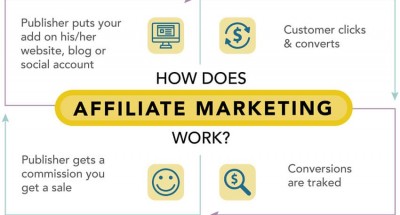Keyword Clustering
Keyword clustering is a way of analyzing and grouping thousands of similar queries and keywords into small clusters to improve the site’s optimization. These clustered keywords have similar meanings or intent. Keyword clustering is an advanced step to level up your SEO game by giving you the option of focusing on multiple keywords rather than just one.
Imagine it as a keyring that has multiple keys where the keyring is your content, and multiple keys are your multiple keywords. For example, if you have a web page with keywords like “NFT Marketplace” along with other keywords such as “NFT artworks”, “NFT games”, and “NFT sales”, which are nothing but multiple keywords with similar search intent.
What it is not?
Keyword clustering is not about picking the right keyword and grouping them to fool a search engine. It is about developing a content strategy that covers a topic in great detail with the intention of convincing visitors and search engines that you are a subject matter expert. The content should be in-depth yet highly relevant to the core topic.
Since search engines favor keyword clusters by allowing them to make connections between pages. It is only wise to not rely upon a single keyword and limit the market share. Not only does keyword clustering allow the detection of semantic relationships between content pieces, but it also helps recognize the content as a trusted authority, which is worth the top rank.
Why is keyword clustering important?
The main idea behind clustering your keywords is to make it google-friendly and user-friendly by covering every possible information people search online. It changes the way people consume and search for information.
Improved ranking for both short-tail keywords and long-tail keywords
Ranging from 1-3 words, short-tail keywords have higher search volume and attract more visitors to your web page. Whereas long-tail keywords range from 3 words or more and have comparatively less search volume and visitors but have higher conversion rates. By clustering your keywords, you can utilize the features of both categories of keywords.
Increased organic traffic
By clustering your keywords, you can establish more powerful content that can make your website look more authoritative to the search engine and the visitors, resulting in more organic traffic.
Targeting user intent
Nothing can be more crucial than understanding the reason and goal behind a user’s query on a search engine. Understanding the user intent as a business not only gives the idea of what the user is interested in but also gives the power to target it. Where keyword stuffing can fail terribly at this job, keyword clustering, on the other hand, is more likely to convert the lead by covering a wide range of topics.
Increased number of keywords to rank for
When your one web page can rank for multiple keywords, why stick to a single keyword or query? With the help of keyword clusters, you can rank for multiple keywords by planning and optimizing your content that targets multiple similar and related keywords.
Improved internal linking
Internal link helps to navigate from one page to another on your site, which helps the search engines understand your site’s structure. When Google crawls from a known page to a new page, it becomes familiar with your site’s structure. It also helps users to navigate between relevant pages on the site.
How to do keyword clustering?
Now that you know how powerful this SEO strategy is, it is time to finally put it into action. Unlike keyword research, which is an easy way of planning your content strategy and takes less time, keyword clustering takes more time, resources, and research, as well as more work for content creation. The process can be divided into 4 stages.
Keyword Collection
The first task is to collect every possible keyword that is relevant to your niche. You can do this by using Google Trends and Google Analytics and gathering insights on how your competition is ranking on top.
While you collect these keywords, make sure that there are different types of search queries, including 2-3 word phrases and long-tail keywords, as well as related keywords, subtopics, autocompletes, and queries that visitors are searching more in your niche.
As you collect your keywords, keep in mind that it is going to bring the right visitors to your website who are interested in you and are more likely to get converted. Hence, relevance and user intent should be your utmost priority.
Create Keyword Clusters
Once you have the complete keyword list, it is now time to create manageable lists and remove which are not needed. Organizing the keywords into groups based on the user intent behind each keyword is done by two methods: Manual keyword clustering and automated keyword clustering.
Since manual keyword clustering is time-consuming, using automated keyword clustering tools is highly recommended. Keep in mind the various criteria, such as semantic relevance, which means using keywords that have similar search intent to make the content more readable and less confusing to Google.
Another criterion is search volume and CPC (cost-per-click), meaning your keywords should have a reasonable search volume as well as the potential to convert. As you focus on these criteria, see to it that not all these keywords belong to your cluster, and you need to remove some of them.
The high-value keywords that have high CPCs, semantic relevance, high search volumes, and relevant search intent are what decide your SE ranking.
Create and Optimize Pillar Pages
Once you have created keywords into clusters, it's now time to create cluster pages or pillar pages. Your pillar page represents the core topic of your website, which acts as a roadmap for creating, organizing, and optimizing the content of the webpage.
Since the goal of a pillar page is to be a traffic magnet and bring a high number of visitors, it should be able to generate a high number of backlinks as well. Another crucial step is to promote your pillar page on various social media platforms. The more authority and traffic the pillar page builds up, the better its performance gets on SERPs resulting in more linking equity to the content in the cluster.
And since the pillar page is gaining more visitors, it will result in making other secondary pages more popular, which will eventually lead to boosting the performance of the whole website.
Creating Blog Content Based on Keyword Clusters
Now that you have sorted out the semantics to build an effective and optimized website architecture, using the same keyword clusters, you now need to build the content of your blog. Because of the keyword clusters, your blog will not only cover short-tail keywords but will also cover related keywords, subtopics, and long-tail keywords.
Having a segmented group of keywords can help you majorly in two ways: First, it presents the opportunity to maximize the number of phrases you wish your content to rank for. Second, it gives you the chance to build more internal links to your website that can strengthen your chances of ranking higher as the visitor will arrive on your pillar page through backlinks.
Internal links make visitors spend more time on your website, and the more time they spend, the more the chance of getting their attention and converting them into your user. Along with this advantage, internal links also help Google understand which pages are more important for your website.
Final Words
Google is continually developing and evolving itself. It's time that we too catch up with it. Keyword clustering is a powerful tool using which we can create, optimize & organize our content by diversifying our language and ranking for the top.
Because of keyword clustering, your content looks more in-depth and shows that you hold authority in your niche. This in-depth content not only aids in covering every possible user intent and helping searchers to get what they want, but it also covers every criterion that a search engine is looking for.



